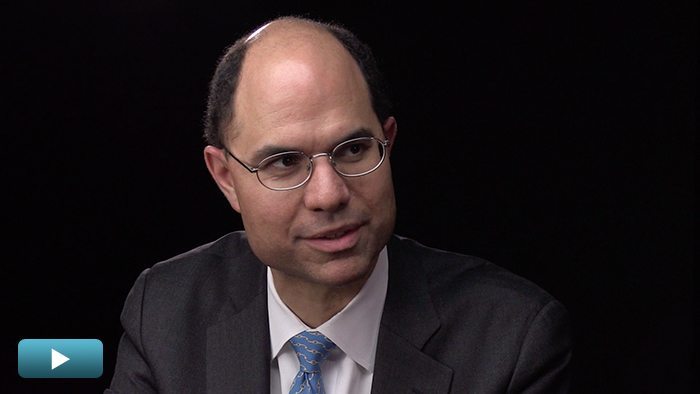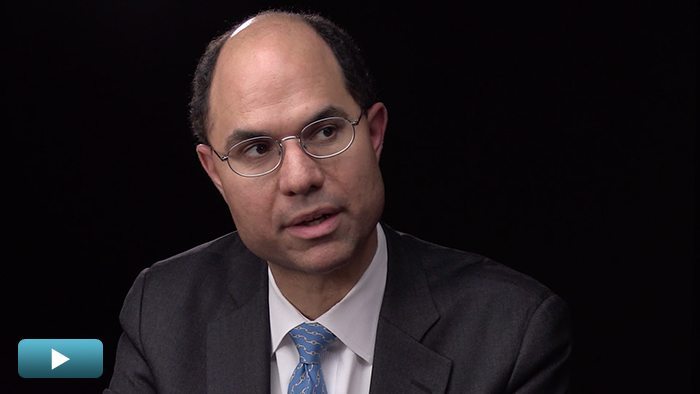Capital Raising Goes Global
Chris Keber of Hines says the capital flows for private real estate has become an international pool. Which regions are diving in and how are rising interest rates impacting the global appetite for risk?
Transcript Download Transcript
Capital Raising Goes Global
With Chris Keber of Hines
Zoe Hughes, PrivcapRE:
I am joined by Chris Keber, senior manager and director at Hines. Thank you so much for joining us.
As you watched the evolution of capital sources for commercial real estate, your job has become increasingly global. Is this globalization of capital a trend? Is this set to accelerate?
Chris Keber, Hines:
It is only going in one direction. Looking at the history of our industry, capital began into private markets from the developed markets of North America and western Europe. Now is the first time in our industry’s history that it is truly global in the most fundamental sense.
What does it mean? On every continent, pools of capital are looking for places to invest in private markets and, specifically, for us, in private real estate.
What does it mean for folks in my situation? Lots of travel, because relationships are key, in spite of the business being global and the benefits of technology. Local access is still important. It amazes me that every time we pick up the newspaper, there is a new pool of capital that wants to be in private real estate. It is an exciting moment in the industry; it is clearly moving in one direction, which is more global.
Hughes: Where do you see the appetite coming from, the geographic areas that take up your time and your travel budgets?
Keber: Traditionally, western Europe, the U.S. and Canada constituted much of our focus. Today, you could add the Middle East and Asia, as well as Australia, which is an important investment partner to our markets. I spend time in North America and the Middle East, with colleagues who focus more in Asia.
Hughes: The Chinese, in the last 6 to 12 months as insurance companies, state agencies—is that showing up more on your radar?
Keber: China is an interesting case. It will be the largest economy in the world. The amount of capital there is astounding. You start with the state-backed enterprises, CIC, China Investment Corp. and SAFE, their counterpart—it has now come down the rung to the insurance companies in China. There is a lot of press about publicly traded real-estate companies in China beginning to invest capital and creating a beachhead for themselves, primarily in western Europe and the U.S.
Hughes: How do you build international relationships with international investors? How do you initiate it, then develop it and scale it up?
Keber: My firm has a great global brand, which matters tremendously in emerging capital investors’ minds. We get many inquiries about how Hines might be a part of a new investor’s program and it is answering that call. The opposite scenario is that we become aware that pool capital is interested in private real estate and we do it the old-fashioned way: we get on a plane and make an appointment to see them.
The Hines brand resonates tremendously. We are in 115 cities and 18 countries on five continents. We not only have a global brand, we have local offices and projects around the world. Even if it is a new investor I have not spoken with before, I will look up what Hines has done in their city and say, “You might know this building—that was a Hines project.” That creates a local intimacy that makes it easier for people in my position.
Hughes: You talk about the global brand. Hines has that reputation and track record, but globalizing capital flows is effective for all of commercial real estate. Not everybody has the Hines brand behind them.
Keber: That is true.
Hughes: How does this globalization affect other people? Do you have to be a global player in the industry? How does it affect the smaller players?
Keber: As with many things, the big are going to get bigger because of this and that capital flow to real estate is just getting larger. It means good things for all components of the commercial real estate sector because that money flows in and trickles down to the bottom and everywhere in between. That is fundamental for our business. We may want to talk about taxation and government influence in letting money in and taxing it on the way out, which is a key sensitivity.
Hughes: Always a burden.
Keber: Yes, but there are capital markets—you have written about this—that are well ahead of real-estate fundamentals. It is worrisome that the money wants to get in with such tremendous strength that it may be buying into things and bidding up things that lag on a fundamental supply-and-demand perspective.
Hughes: When you speak to international investors, what is the risk appetite, the real appetite? What do they want to invest in?
Keber: You are exactly right. When global investors seek to begin, particularly, private real-estate development, they look to London, Hong Kong, New York. Because of that, the cap rates in those cities have come down tremendously. The reason is that the investment committees know those places well and they say, “This is a good place to park money, it’s a safe haven.” What does that do for risk? It has become very risky to invest in what used to be considered safe assets because getting a 5% yield from a Park Avenue office building felt great when the 10-year treasury was at 2% or less.
Hughes: It is now 3.9% or less.
Keber: Right. Now that it is sub-four cap and interest rates are on a 10-year basis, close to three, it starts to look like, “Wait a minute, we are only getting 110 basis-point spread between the risk-free rate and an active management piece of property.”
What does it do to risk? At Hines, we say, “It is time to develop property” because, when cap rates become that low and supplies become so precious, it is time to add supply. Selectively, we are working with investors to begin new projects to create new supply because we can deliver a building at an 8% rate and sell it at a 6% rate, which feels pretty good.
Hughes: Looking to global capital raising, one big impediment—especially for foreign institutional money coming into the U.S.—is taxation and its hurdles. In the U.S., how much of a barrier is FIRPTA and the tax streams we must through to attract foreign companies?
Keber: FIRPTA continues to be probably the #1 domestic taxation problem for private-equity real estate. It was put in place about 30 years ago to ensure the U.S. was not being bought up by too many foreigners. In my view, that is not a realistic outcome. The government sought to slow investment by taxing the exit of capital that came initially from foreign sources.
I find two sets of foreign investors: the first are very tax sensitive and make great use of legal and conventional offshore structures that minimize their tax impact. That has its shortcomings—for instance, it often means that an investor can only be 49% or less of an investment.
Hughes: It impacts your exit strategy?
Keber: It can very much impact your exit strategy because, certainly in the REIT structures being created, you are selling REIT shares and non-specific assets. It slows the total universe of potential buyers you might have.


